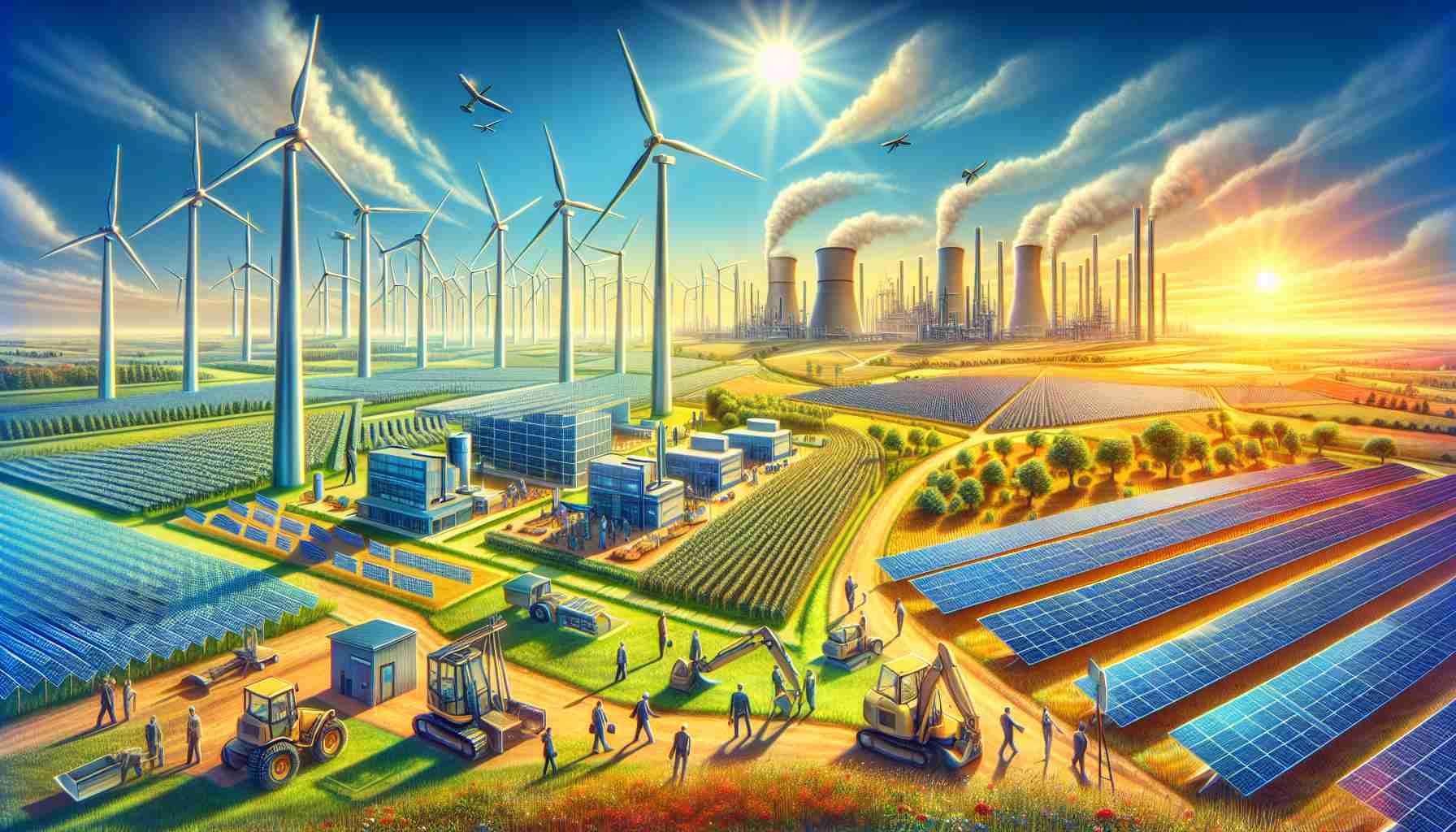
- MidAmerican Energy proposes a $600 million energy project in Iowa, integrating natural gas and solar power.
- Six solar projects aim to supply enough electricity to power 144,000 homes annually.
- The Orient Energy Center, a natural gas plant in Adair County, will activate during peak demand, enhancing energy reliability.
- The initiative is expected to economically boost local communities through $270 million in lease payments and $25 million in property tax increases.
- The project addresses rising energy demands from technology sectors, such as AI and data centers, while supporting sustainability and innovation.
- This diverse energy strategy sets a precedent for balancing affordability with sustainable energy solutions.
Vast plains of Iowa are poised to transform under MidAmerican Energy’s bold $600 million proposal—a fusion of natural gas and solar sites designed to tackle the booming state’s energy cravings. Picture this: six solar projects stretching across windswept fields, capturing sunlight to power 144,000 homes each year. An audacious move, but it’s more than just a power play; it’s a lifeline thrown to both energy-hungry tech giants and the residents who call these fields home.
In the quiet community of Adair County, a natural gas plant, known as Orient Energy Center, is set to rise. Mighty and dormant for much of the year, this giant awakens only when demand peaks, filling the landscape’s energy needs efficiently. Just south of Orient, a town nestled away from hustle and bustle, this plant promises to bring jobs and economic vibrancy to the heartland.
This ambitious strategy unfolds in tandem with sweeping solar sites. However, the tale isn’t just about energy. It’s about boosting local economies—$270 million dripping like golden leaves into landowners’ pockets in lease payments, while property taxes flourish by $25 million.
MidAmerican’s vision sees beyond the horizon. Its energy cocktail is a crafted response to the modern age—an era where AI reigns, data centers buzz ceaselessly, and electric vehicles glide silently. This dual approach echoes a broader narrative nationwide, as electric utilities scramble to match the tech-fueled hunger for power.
As the future unfurls and Iowa’s metal giants hum to life, the message is clear: Diverse energy solutions safeguard not only affordability but also sustainability. MidAmerican’s move sets a powerful precedent, ensuring energy stays robust, green, and undeniably innovative.
Can Solar and Natural Gas Transform Iowa? Discover How MidAmerican Energy’s Bold Move Could Revolutionize the Future!
How-To Steps & Life Hacks
Utilizing Combined Energy Sources:
1. Assessment of Energy Needs: Identify peak demand periods and determine areas of high energy consumption, especially considering technological and residential growth.
2. Integration of Solar Panels: Install solar projects in vast, unobstructed lands to maximize sun exposure and efficiency. Use advanced solar tracking systems to increase energy yield.
3. Supplementary Natural Gas Use: Deploy natural gas plants to cover lapses in solar power during peak demand times, ensuring a reliable energy supply.
4. Leverage Local Support: Engage with local communities, offering lease payments and job opportunities to garner support and facilitate project development.
Real-World Use Cases
– Data Centers: Tech giants like Google and Facebook are increasingly setting up data centers in areas like Iowa, which require substantial energy resources. MidAmerican’s strategy offers a blueprint on managing fluctuating energy demands of these facilities.
– Electric Vehicle Infrastructure: Iowa can set a precedent for states looking to develop robust infrastructure supporting electric vehicle adoption.
Market Forecasts & Industry Trends
The renewable energy market is projected to grow substantially, with solar expected to reach a market value of $200 billion by 2026. Transitioning to hybrid energy models like that of MidAmerican Energy aligns with industry trends emphasizing grid stability and sustainability.
Reviews & Comparisons
Advantages of MidAmerican’s Approach:
– Sustainability: Combines renewable solar energy with reliable natural gas to ensure consistent energy supply.
– Economic Benefits: Significant economic input through local jobs and land lease payments.
Comparison with Other Models:
– Companies like Pacific Gas and Electric (PG&E) largely focus on solar but lack the natural gas component to balance demand variability.
Controversies & Limitations
– Environmental Concerns: Natural gas plants emit greenhouse gases, potentially offsetting the benefits of solar energy.
– Land Use: Large-scale solar farms can disrupt local ecosystems and require extensive land, often drawing regulatory scrutiny.
Features, Specs & Pricing
– Solar Projects: Designed to support over 144,000 homes, each with cutting-edge solar technology and tracking systems.
– Orient Energy Center: The natural gas plant is defined by its scalable operational capacity, designed to activate only during peak demand periods.
Security & Sustainability
– Energy Security: Diverse energy sources mitigate risks associated with supply shortfalls and fluctuating renewable output.
– Sustainability Practices: Solar energy significantly reduces carbon footprint, while the use of natural gas in a limited capacity minimizes environmental impact.
Insights & Predictions
Iowa’s energy strategy offers lessons for other states eager to blend renewable resources with traditional power sources effectively. This dual-methodology could become a model for sustainable, reliable, and economically beneficial power generation nationwide.
Recommendations & Quick Tips
– Community Engagement: Effective communication and community benefits can fast-track project approvals and ensure smooth implementation.
– Energy Storage Solutions: Invest in battery storage technologies to store excess solar power for use during high demand periods.
Pros & Cons Overview
Pros:
– Provides a sustainable and reliable energy solution.
– Promotes local economic growth through job creation.
Cons:
– Natural gas reliance raises environmental concerns.
– High initial investment required for infrastructure setup.
For more insights on sustainable energy solutions and industry updates, visit MidAmerican Energy.
By considering diversified energy solutions and engaging local communities, states can harness the dual benefits of renewable energy and traditional power sources effectively. Leverage these strategies to support a robust and sustainable energy future.



